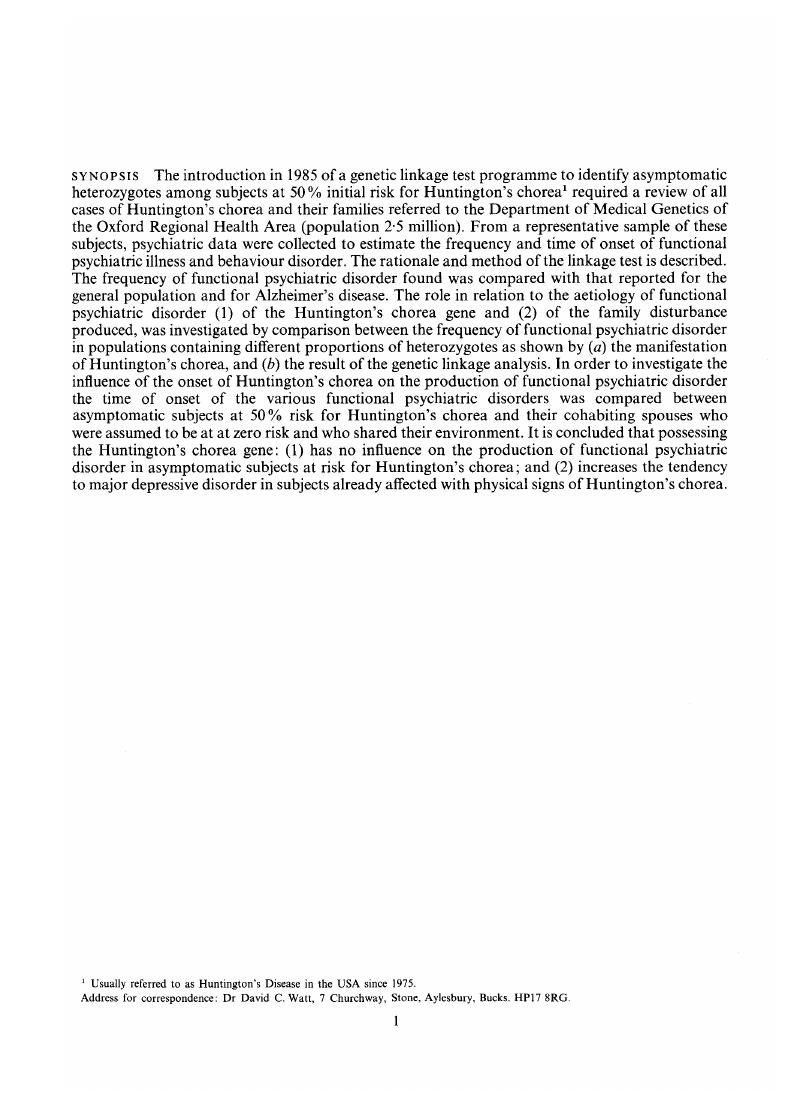Crossref Citations
This article has been cited by the following publications. This list is generated based on data provided by Crossref.
Maier, W.
1996.
Therapie im Grenzgebiet von Psychiatrie und Neurologie.
p.
33.
ANPA Committee on Research, A Report of the
Lauterbach, Edward C.
Cummings, Jeffrey L.
Duffy, James
Coffey, C. Edward
Kaufer, Daniel
Lovell, Mark
Malloy, Paul
Reeve, Alison
Royall, Donald R.
Rummans, Teresa A.
and
Salloway, Stephen P.
1998.
Neuropsychiatric Correlates and Treatment of Lenticulostriatal Diseases.
The Journal of Neuropsychiatry and Clinical Neurosciences,
Vol. 10,
Issue. 3,
p.
249.
Tsuang, Debby
Almqvist, Elisabeth W.
Lipe, Hillary
Strgar, Franc
DiGiacomo, Lilly
Hoff, David
Eugenio, Charisma
Hayden, Michael R.
and
Bird, Thomas D.
2000.
Familial Aggregation of Psychotic Symptoms in Huntington’s Disease.
American Journal of Psychiatry,
Vol. 157,
Issue. 12,
p.
1955.
Anderson, Karen E.
and
Marder, Karen S.
2001.
An overview of psychiatric symptoms in Huntington’s disease.
Current Psychiatry Reports,
Vol. 3,
Issue. 5,
p.
379.
Wetterling, Tilman
2002.
Organische psychische Störungen.
p.
281.
van Duijn, E.
Kingma, E.M.
and
van der Mast, R.C.
2007.
Psychopathology in Verified Huntington’s Disease Gene Carriers.
The Journal of Neuropsychiatry and Clinical Neurosciences,
Vol. 19,
Issue. 4,
p.
441.
Cook, Clare
2008.
An Exploration of the Neural Control of Multitasking and the Implications for Practice.
British Journal of Occupational Therapy,
Vol. 71,
Issue. 6,
p.
241.
Krishnamoorthy, Ashok
and
Craufurd, David
2011.
Treatment of Apathy in Huntington’s Disease and Other Movement Disorders.
Current Treatment Options in Neurology,
Vol. 13,
Issue. 5,
p.
508.
Paoli, Ricardo
Botturi, Andrea
Ciammola, Andrea
Silani, Vincenzo
Prunas, Cecilia
Lucchiari, Claudio
Zugno, Elisa
and
Caletti, Elisabetta
2017.
Neuropsychiatric Burden in Huntington’s Disease.
Brain Sciences,
Vol. 7,
Issue. 6,
p.
67.
Keret, Ophir
2022.
Encyclopedia of Behavioral Neuroscience, 2nd edition.
p.
115.





